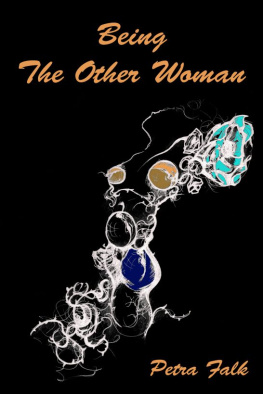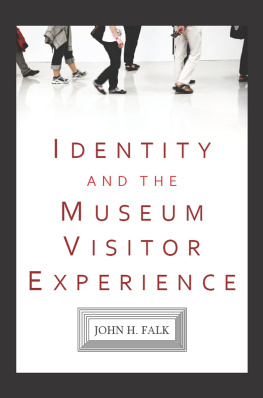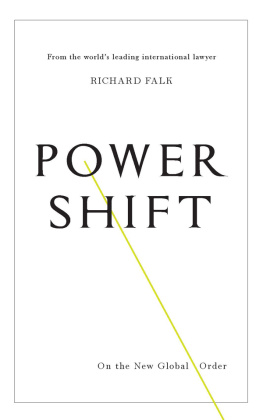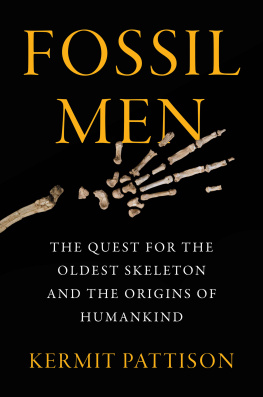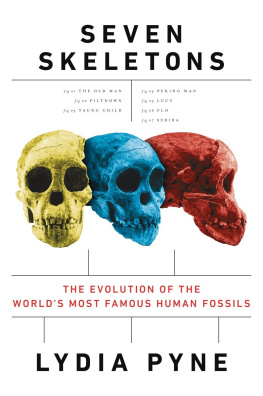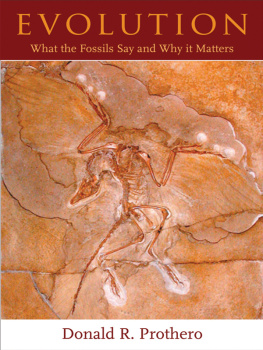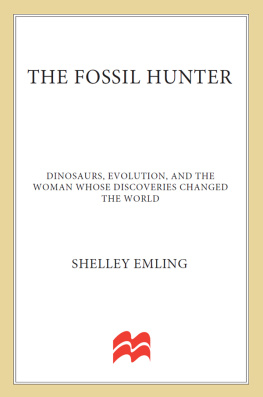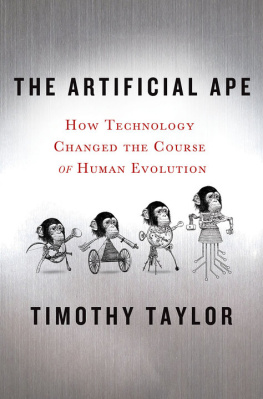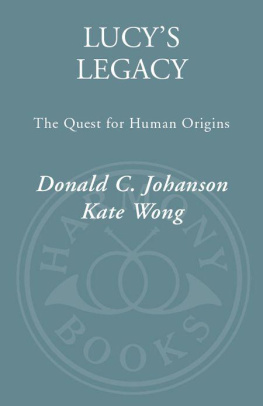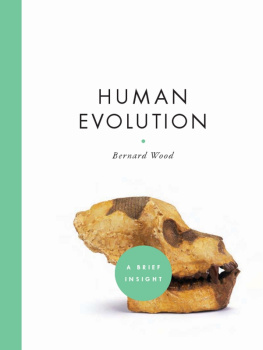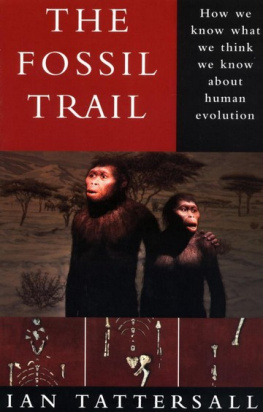The Fossil Chronicles
The Fossil Chronicles
How Two Controversial Discoveries
Changed Our View of Human Evolution
Dean Falk

University of California Press, one of the most distinguished university presses in the United States, enriches lives around the world by advancing scholarship in the humanities, social sciences, and natural sciences. Its activities are supported by the UC Press Foundation and by philanthropic contributions from individuals and institutions. For more information, visit www.ucpress.edu .
University of California Press
Berkeley and Los Angeles, California
University of California Press, Ltd.
London, England
2011 by Dean Falk
Library of Congress Cataloging-in-Publication Data
Falk., Dean.
The fossil chronicles : how two controversial discoveries changed our view of human evolution / Dean Falk.
p. cm.
Includes bibliographical references and index.
ISBN 978-0-520-26670-4 (cloth : alk. paper)
1. Fossil hominids. 2. Flores man. 3. Australopithecines. 4. Human remains (Archaeology). 5. Human evolutionPhilosophy. 6. Paleoanthropology. I. Title.
GN282.5.F35 2011
599.938dc22 2011003602
Manufactured in the United States of America
20 19 18 17 16 15 14 13 12 11
10 9 8 7 6 5 4 3 2 1
In keeping with its commitment to support environmentally responsible and sustainable printing practices, UC Press has printed this book on Natures Book, which contains 30% post-consumer waste and meets the minimum requirements of ANSI/NISO Z 39.48-1992 (R 1997) (Permanence of Paper).
For Joel Yohalem
CONTENTS
ILLUSTRATIONS
ACKNOWLEDGMENTS
Much of this book was written while I was in residence during 20089 at the School for Advanced Research (SAR), in Santa Fe, New Mexico. There is nothing like getting up in the morning knowing that your only commitment is to work on your book. (Indeed, there were some cozy, snowy days when I did not get out of my pajamas.) For this privilege, I will be eternally thankful to the staff at SAR, including President James Brooks. Laura Holt obtained numerous esoteric references and helped with images, Jason S. Ordaz photographed specimens, and Jonathan Lewis spent countless hours shaping up the illustrations of endocasts. It was inspiring to live among several other resident scholars on the beautiful SAR campus. My next-door neighbor, Wenda Trevathan, finished her book on evolutionary medicine way ahead of the rest of us. We became close friends and will always remain so.
This project allowed me to do research in historical archives for the first time, and I loved getting lost in the details of Raymond Darts life. Dart (18931988) is famous for having discovered the world-renowned Taung fossil, which was the first recognized australopithecine. His unpublished manuscripts, notes, correspondence, and illustrations of Taungs endocast, discussed in this book, are part of the holdings in the archives of the University of Witwatersrand (Wits), in Johannesburg, South Africa. I am deeply indebted to Dr. Goran trkalj for information about locating Darts papers in the Wits archives, to Lesego Phachane and Mack Mohale for access to and assistance in obtaining copies of these materials, to Wits for permission to reproduce Darts previously unpublished sketches, to Francis Thackeray for helping locate images of Taung and Dart, and to Kgomotso Mothate for going to a good deal of trouble to locate the historical image of Dart with Taung that is reproduced in this book.
Professor Phillip V. Tobias knew Dart well and eventually succeeded him as chair of the Anatomy Department at Wits. I am grateful to him for answering my questions and for providing reprints of his publications concerning not only the discovery of Taung but also the reasons why it took so long for scientists to acknowledge the validity and importance of Darts contributions. Peter Faugust provided assistance in assembling and mailing reprints. My insights from the unpublished papers of Dart were initially published in the 2009 Yearbook of Physical Anthropology, and I thank Bob Sussman (the editor) for making that possible.
I am especially grateful to Ron Clarke for helping me reexamine the Taung and other australopithecine specimens during my 2008 visit to Wits and for taking me to several important fossil hominin caves. It was a special thrill to descend deep within a cave at Sterkfontein to see the fabulous australopithecine skeleton known as Little Foot, which is still being excavated under Rons direction.
My analysis of Taung had to be placed within historical context, of course, which took me back to the early 1900s, when the awful Piltdown hoax was first perpetrated. The misconceptions about human evolution that were generated by Piltdown were widely accepted by scientists when Dart announced Taung in 1925. Partly because of this, it would be decades before the controversy surrounding Taung would be settled in Darts favor. As discussed in Man Who Found the Missing Link, that got me thinking along these lines, and I thank her for providing clarification about the coconut story surrounding the first discovery of a Pithecanthropus skullcap. I am also deeply grateful to Pat for taking the time to read a draft of this book and for providing numerous constructive suggestions. This book includes an image of John Cookes wonderful oil painting The Piltdown Committee, and I thank Richard Milner for helping me find it.
My gratitude to my colleagues from Mallinckrodt Institute of Radiology at Washington University School of Medicine in St. Louis knows no bounds. Fred Prior is head of the Electronic Radiology Laboratory, where I have collaborated for many years with him, Kirk Smith, and Charles (aka Scooter) Hildebolt on various projects related to brain evolution. As described in the second half of this book, Mallinckrodt is where the virtual endocast from Hobbit (LBI), the most complete specimen of Homo floresiensis, was first reconstructed, measured, and analyzed. That is also where it was compared with virtual endocasts from normal humans and human patients with microcephaly. The National Geographic Society (NGS) provided financial support for both of these projects. Our team enjoyed working with David Hamlin when he filmed part of his 2005 NGS television show about the discovery of Homo floresiensis (Tiny Humans: The Hobbits of Flores).
One of the most interesting features of LBIs endocast is the unusual morphology of its frontal lobe. The pathbreaking neurological research of Katerina Semendeferi and her colleagues informed our interpretation of Hobbits endocast. Katerina also reviewed an earlier version of this book and provided numerous helpful suggestions, a time-consuming task, which I deeply appreciate.
Many people helped our work on Homo floresiensis move forward. First and foremost, my colleagues at Mallinckrodt and I will be eternally grateful to Mike Morwood, coleader of the team that discovered Homo floresiensis, for inviting us to analyze LBIs endocast. It has been an incredibly exciting adventure. Officials from the Indonesian National Research Centre for Archaeology (ARKENAS) kindly permitted our access to the necessary data. We are indebted to our Indonesia collaborators Thomas Sutikna, Jatmiko, Rokhus Due Awe, and E. Wayhu Saptomo, without whom our research would never have been done. We had the pleasure of meeting them and visiting Flores because of an invitation extended to us by the late professor emeritus Teuku Jacob to attend the International Seminar on Southeast Asian Paleoanthropology in Yogyakarta, Java, in 2007.
Next page

